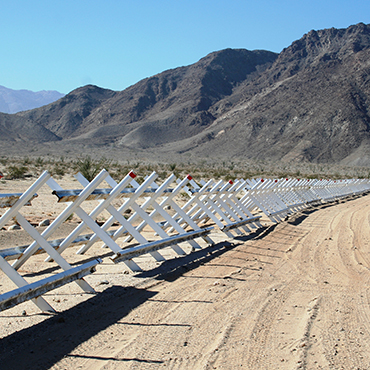Border crisis shines a light on DHS tech woes

The flood of unaccompanied minors to the southern border has highlighted the need for more efficient and effective technologies to track both documented and undocumented immigrants.

The Department of Homeland Security's effort to push out new technology in support of its border security duties remains uneven because of nagging organizational issues -- and lawmakers say some of those issues are affecting the response to the continuing crisis at the U.S.-Mexico border.
While the nation's attention is riveted on thousands of unaccompanied minors crossing into the U.S., and Congress and the president spar over how to respond, a pair of House Science, Space, and Technology subcommittees on July 31 held the first of two planned hearings tackling the narrower question of how best to utilize technology to address such problems.
Oversight Subcommittee Chairman Paul Broun (R-Ga.), ranking member Dan Maffei (D-N.Y.), Research and Technology Subcommittee ranking member Dan Lipinski (D-Ill.) and other lawmakers noted the current situation had proved the need for more efficient and effective technologies to track both documented and undocumented border crossers.
"The influx raises questions. Agents are focused on processing and not on security," said Broun.
Border Patrol agents, he said, would benefit from video cameras, thermal imaging systems, drones and ground sensors, but there is no overarching plan in place to add newer versions of the technology. "S&T needs a clear, comprehensive roadmap," Broun said.
The panel of witnesses, including experts from Rand Corp.'s National Security Research Division, the Government Accountability Office and the Institute for Homeland Security Solutions, all gave the DHS Science and Technology Directorate "incomplete" grades on how it has been handling research, development and implementation of border security technology.
Lipinski cited S&T's inability to say how much money it has spent on research and development because its records are not uniform, the absence of a strategic plan for R&D, and its lack of ways to share communications about new technology across DHS.
Dave Maurer, GAO's director for homeland security and justice, made much the same point in a 2012 report that was critical of DHS's lack of uniform management for tech R&D. Despite some progress by DHS in coordinating R&D across its component agencies in the last couple of years, Maurer said July 31 that the agency has much work left to do.
For instance, he said, DHS only recently came up with a common definition of what constitutes research and development across its components. That is an important first step, but Maurer said the agency is still struggling with basics like what's being spent on R&D, who's spending it and where. "We found 25 instances of R&D overlap" in the 2012 report, he said.
Broun said DHS management issues are longstanding and chronic. "The department is no longer in its infancy," he said. "Should [DHS] research and development be put on [GAO's] high risk list?"
Maurer said there wasn't a specific "shout out to R&D" on the list, but that DHS as a whole was flagged by GAO for its nagging management issues.
Maurer did credit the department with significantly shifting how it buys new technology in the wake of its failed multi-billion dollar SBINet border surveillance technology contract. After significant problems with the program were uncovered, DHS essentially abandoned it in 2010 and instituted a commercial-of-the-shelf approach to buying border detection and surveillance gear.
Maffei, however, questioned whether the COTS approach was working for DHS.
Jack Riley, vice president at RAND National Security Research Division, responded that the technology being brought in under the program was "good and mature."
"DHS's acquisition processes are maturing," he added. "They're not perfect, though."
One suggestion Riley made was for the department to consider designating a "czar" with central accountability for border issues, similar to the host of other czars appointed by various White Houses across the decades to concentrate on a given troublesome issue.
No one from the Science and Technology Directorate testified at the hearing. That testimony is planned for the second hearing in the series, expected to come this fall.


